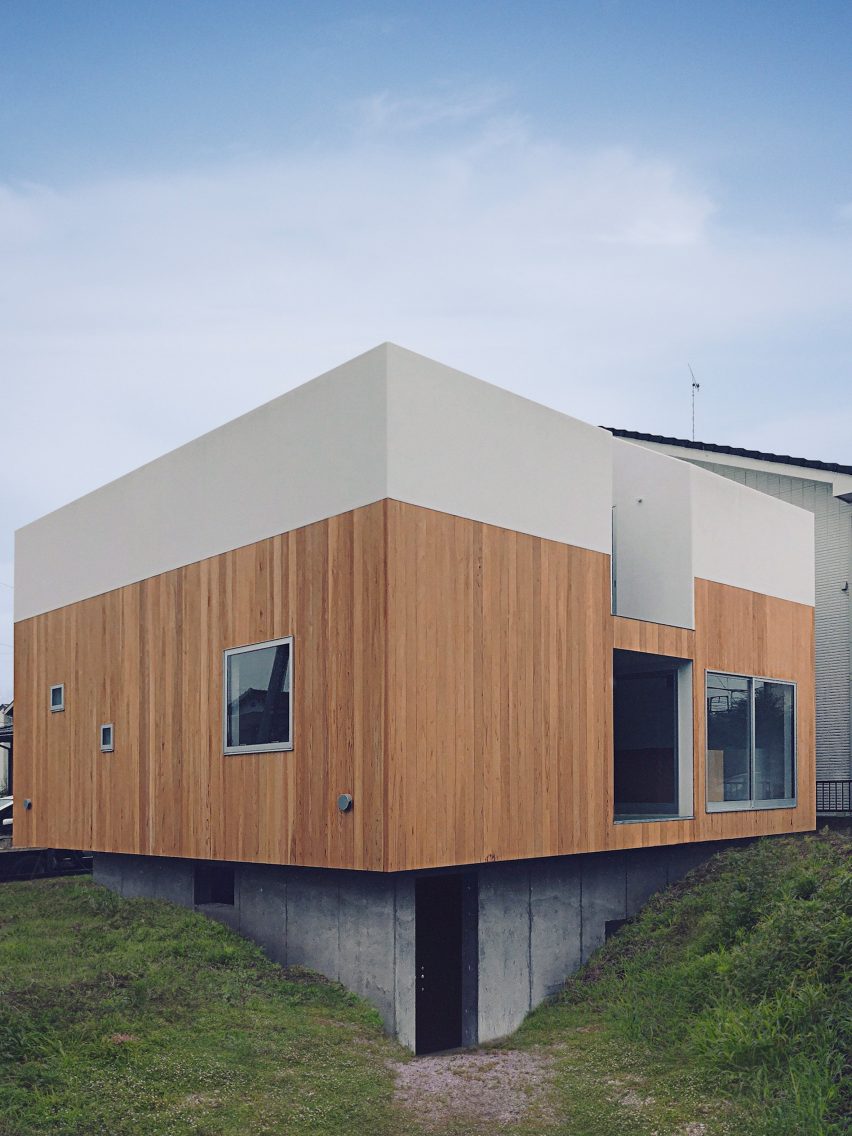Japanese studio Chop + Archi created a deep cross-shaped void in the centre of this compact house in Kumagaya, Japan, dividing it into distinct spaces that are buffered from each other.
Located on a sloping corner site, Kumagaya House is designed to provide its occupants with an alternative to what Chop + Archi views as the outdated “pressures” of the nuclear family home.

Each of the home‘s rooms is bordered by a small outdoor space, made possible with a cruciform void at its centre that takes the form of a corridor and covered terrace on the ground floor and an external terrace above.
These days, the proportion of nuclear-family households has been getting smaller,” explained Chop + Archi.

“If this is the case, it would seem we should transform the structure of the home itself to release the pressure on families to be constantly united,” Chop + Archi added.
“By placing the cross in the centre of the house, four spaces can be created, and the four spaces are buffered, like an air cushion or bubble wrap, in a relationship that does not bring them too close together.”

Externally, this cross-shaped cut-out is expressed by a sloping, white-rendered roof informed by origami. It sits on a timber-clad ground floor raised on a concrete plinth enclosing a basement.
On the ground floor, the central corridor separates a dining space and bathroom from a double-height kitchen and living area illuminated by high-level windows.
Above, the void separates two bedrooms in the home’s northern corners from two triangular balconies that overlook the double-height space on the ground floor.
In addition to being an organisational gesture, the cruciform void helps to provide each space with sufficient airflow – crucial given that Kumagaya is one of Japan’s hottest cities. It also creates outdoor space that is sheltered from a neighbouring railway line.

“The cross-shaped voids create air flow, while the vertical voids push the hot air upward and allow it to escape through the windows on the roof surface,” the studio told Dezeen.
“The train tracks run right in front of the house, and there is a line of sight for commuters and other visitors,” it added. “The crosshairs also serve to shift the line of sight from the line of sight of family inside the house.”

Inside, the finishes of the home have been kept light and minimal, with white walls framed by pale wooden floors and an exposed timber roof structure.
Chop + Archi was founded in 2003 and is led by Hiroo Okubo. Previous projects by the studio include a home in Tokyo in which cut-outs also played a large role.
Other Japanese houses recently featured on Dezeen include House in Kyobate by FujiwaraMuro Architects, which features blank walls, and House in Nishizaki by Studio Cochi Architects, which is defined by raw concrete surfaces.
The photography is by Masao Nishikawa.

